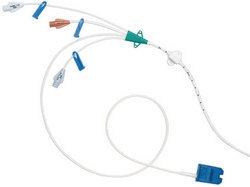- Community
-
Programs
- Schools
-
Careers
- RN Specialties
- Best RN Jobs and Salaries
- Aesthetic Nurse
- Nursing Informatics
- Nurse Case Manager
- NICU Nurse
- Forensic Nurse
- Labor and Delivery Nurse
- Psychiatric Nurse
- Pediatric Nurse
- Travel Nurse
- Telemetry Nurse
- Dermatology Nurse
- Nurse Practitioner
- Best NP Jobs and Salaries
- Family NP (FNP)
- Pediatric NP
- Neonatal NP
- Oncology NP
- Acute Care NP
- Aesthetic NP
- Women's Health NP
- Adult-Gerontology NP
- Orthopedic NP
- Emergency NP
- Psychiatric-Mental Health NP (PMHNP)
- APRN
- Nurse Educator
- Nurse Administrator
- Certified Nurse Midwife (CNM)
- Clinical Nurse Specialist (CNS)
- Certified Registered Nurse Anesthetist (CRNA)
- Resources
- Education


maloneys
46 Posts
I'm a little confused about the practice at my current work place. I see Dobu Rx'd for patients without a Swan. I feel strange administering without understanding how we can titrate without a Swan? Do others see this?
Also, in said workplace, docs Rx Dopamine before Levo on a regular basis. It's often infused peripherally as many pts don't have central access. I often feel like I'm the only one complaining about this. RNs there don't form a united front against this: "life or limb", they say. Anyway, just wondering what people think about this, and also if they are also seeing Dopa use as a first generation pressor. Thank you!